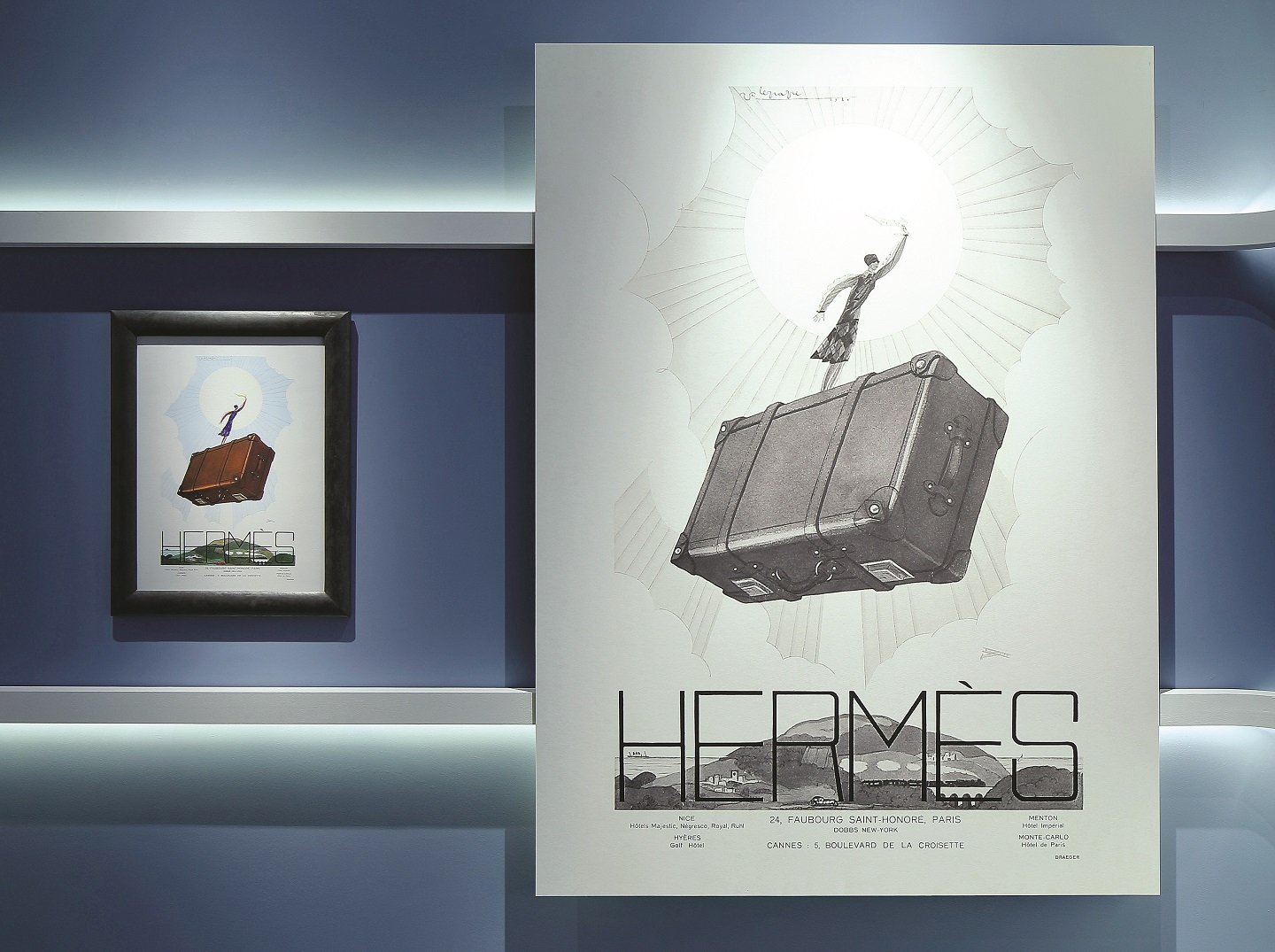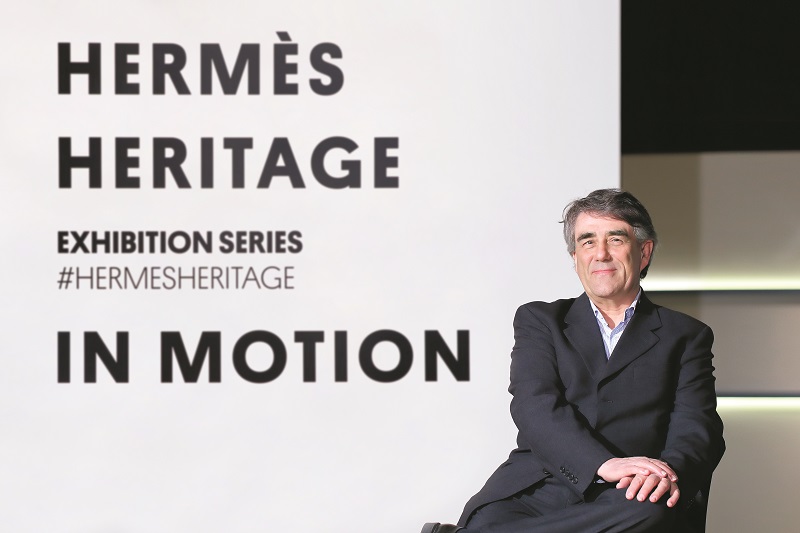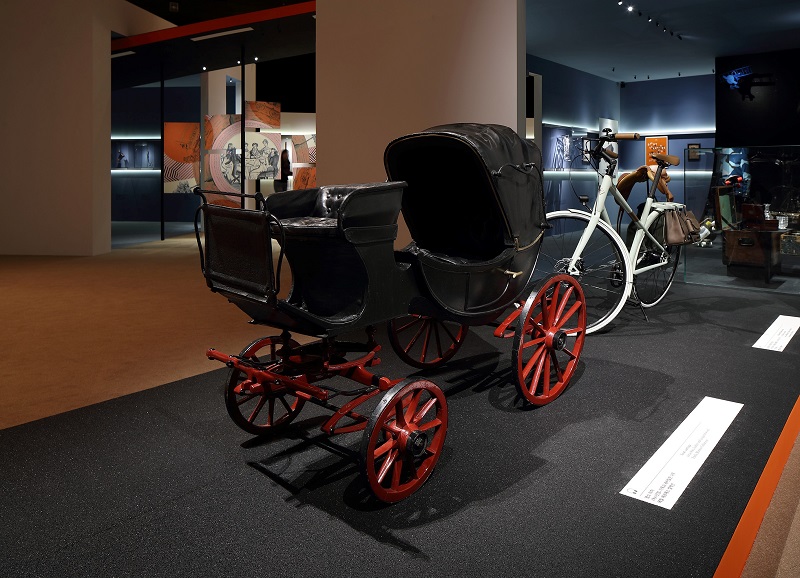
Hermès' 1926 advertisement for travel goods (All photos: Hermès)
It is not enough today to merely indulge in the pleasure a luxury product affords — one must also gain an understanding of its history, its heritage … its raison d’etre. In light of this, the house of Hermès has been orchestrating a periodic series of exhibitions that aim to do just that, via a beautiful and complete brand immersion that allows an open dialogue between the visitor and the maison, juxtaposing all the wealth of its archives with more contemporary offerings.
For beyond its products of infallible beauty and craftsmanship, Hermès also possesses that unique ability to fuse utility with elegance, of being able to temper extreme luxury with wit and a sense of whimsy. In this spirit, a travelling exhibition titled Hermès Heritage, designed to give the privileged visitor a rare glimpse into the house’s history and jealously-guarded objects from its archives, was first held in Shanghai in the autumn of 2017, with the theme of Harnessing the Roots, followed by Beverly Hills in Los Angeles. Happening almost concurrently with the Californian leg, however, was the unveiling of the second module of Hermès Heritage, this time taking the theme of In Motion.

What gives this series of Hermès Heritage exhibitions added gravitas is the fact they are curated by the great Bruno Gaudichon, a name that would be familiar with museum-goers and art aficionados alike. Many know Gaudichon as the genius who transformed an ailing 1930s Art Deco bath house in the troubled town of Roubaix, once France’s poorest, into a place of pilgrimage for all those who love and appreciate art, history and, in a way, anthropology. Working together with Jean-Paul Philippon who oversaw the revamp of the Musée d’Orsay, the Musée d’Art et d’Industrie of Roubaix, popularly referred to simply as La Piscine (French for swimming pool), is undoubtedly one of the town’s greatest success stories in recent history. For a city that has lost much of its grandeur due to the collapse of its wool and textile industries leading to a vast desertion by the younger generation and spiralling unemployment, it is gratifying to see the positive effects and great importance a museum and its accompanying art and exhibits can — and must — play in society.

We were invited for the launch of In Motion, which was unveiled at the end of March in Busan, South Korea’s second largest city after Seoul. The exhibition, which ended just a few days ago on April 10, was held at the culture hall of Shinsegae Centum City, which has the distinction of being the largest department store in the world. This time, the exhibition presented a different collection of treasures from Harnessing the Roots, but all remain sourced from the Emile Hermès collection, the maison’s archives as well as from Hermès’ Conservatoire of Creations, alongside contemporary pieces.
Divided into five sections — The World of Hermès, Emile Hermès’ Travels, Movement is Elegance, Construction Games and The Immobile Journey, viewers followed a visual and interactive thread, hypothetically woven by generations of creators and master craftsmen. The first exhibit featured a goat carriage that dates back to 1890, designed to be pulled by either a goat or big dog while taking the children of the Rothschild family on joyrides. This was juxtaposed with a 2015 Le Flaneur d’Hermès bicycle with a carbon frame that was adorned with a saddlebag made using Clemence bullcalf leather — a splendid contrast of past and present, of the classic and contemporary. Also on display was the first silk twill scarf created by the maison in 1937. Its motif was inspired by the playing board of Jeu de Omnibus et Dames Blanches, a game popular in the 1830s.

Given Hermès’ origins as a saddle maker, it made sense that many of the objects displayed evoked nuances of movement, mobility and the equine. Exhibits like sets of 18th-century Cossack stirrups, interesting stirrup heaters and lanterns, and a pair of enormous boots that once belonged to a postilion are more obvious nods to the brand’s beginnings. Others, like a playful 2004 Kelly rocking horse bag and the maison’s hugely coveted gentlemen’s Haut a courroies bag, originally designed to carry one’s saddle and riding boots, are far subtler.
Wit and whimsy are also strong nouns in the Hermès lexicon and visitors will undoubtedly be charmed by objets d’art like a picnic cane that conceals eating utensils, a storm-resistant pipe, paradoxically named Hurricane, crafted from briar wood with an ebonite stem, and, my personal favourite, a whisky flask made using pewter, glass and leather that resembles a camera.
There is however an overarching and recurring message contained in each and every object: that life is a journey — figuratively and literally — and it should be infused with beauty and a sense of fun whenever possible. How nice, then, that Hermès makes it so easy. For those of us who can afford it, of course.
Look out for 'The Hermès Heritage' exhibition in Kuala Lumpur soon.
This article first appeared on Apr 15, 2019 in The Edge Malaysia.


